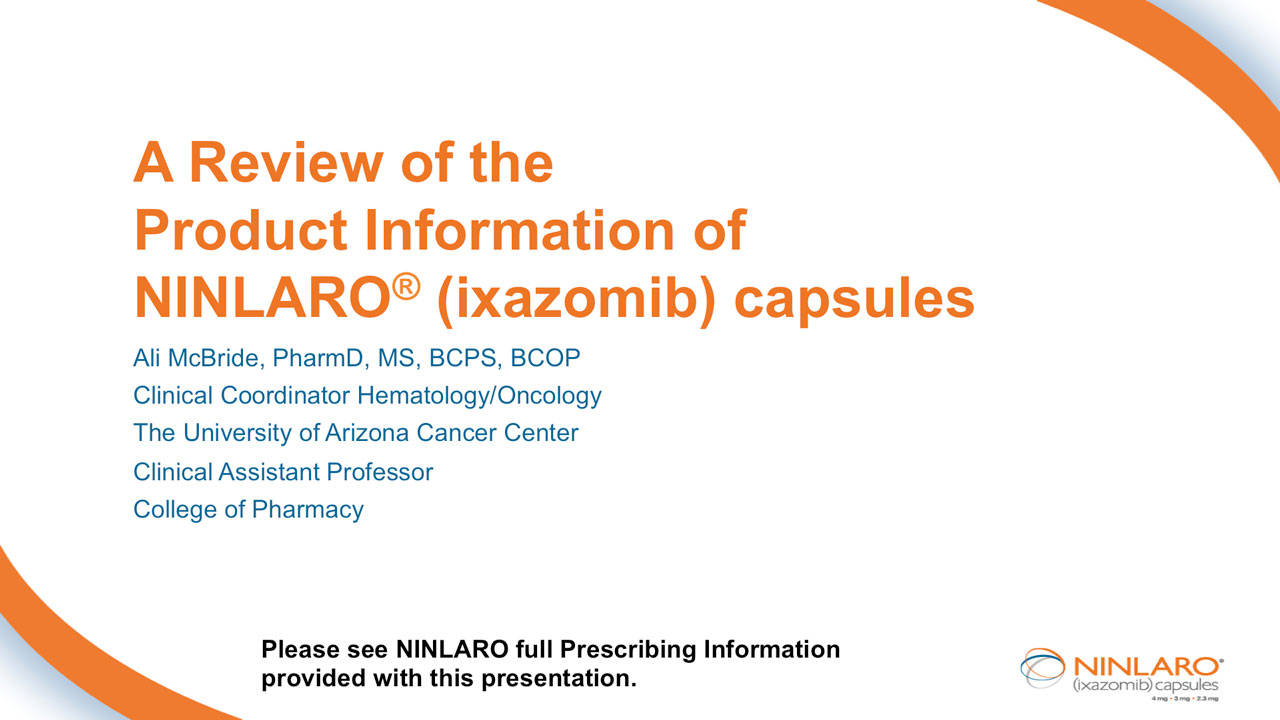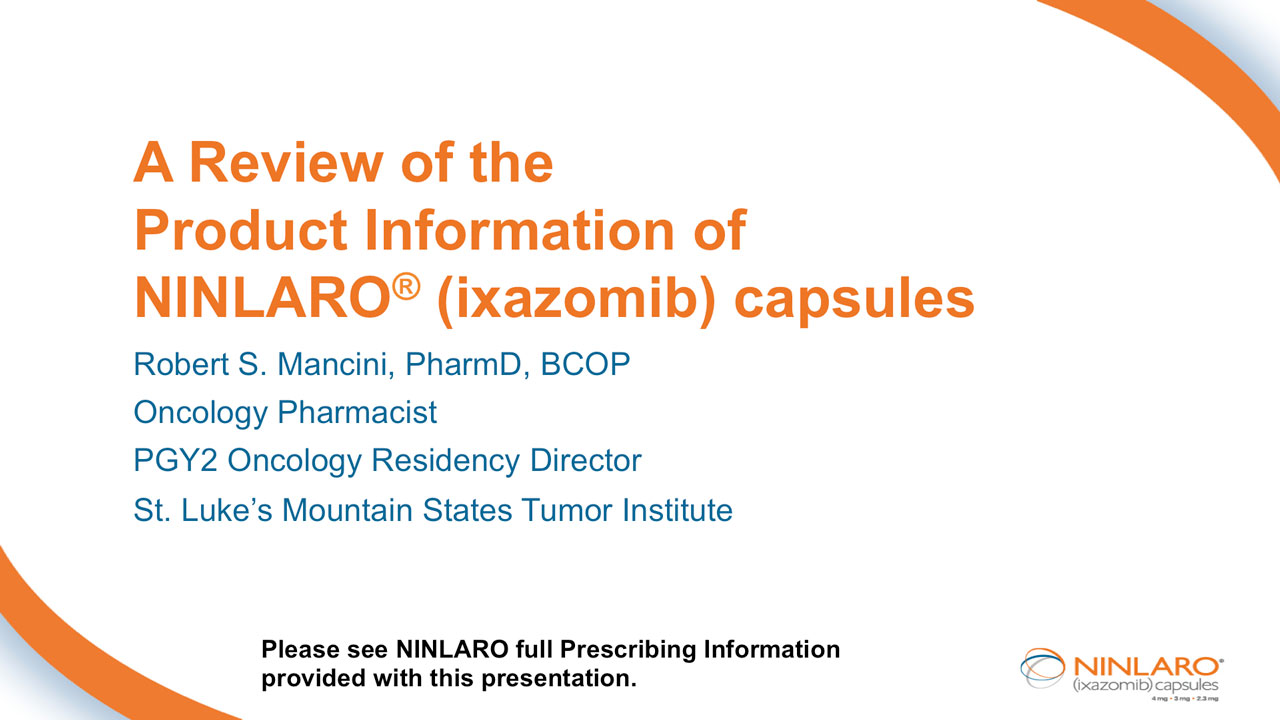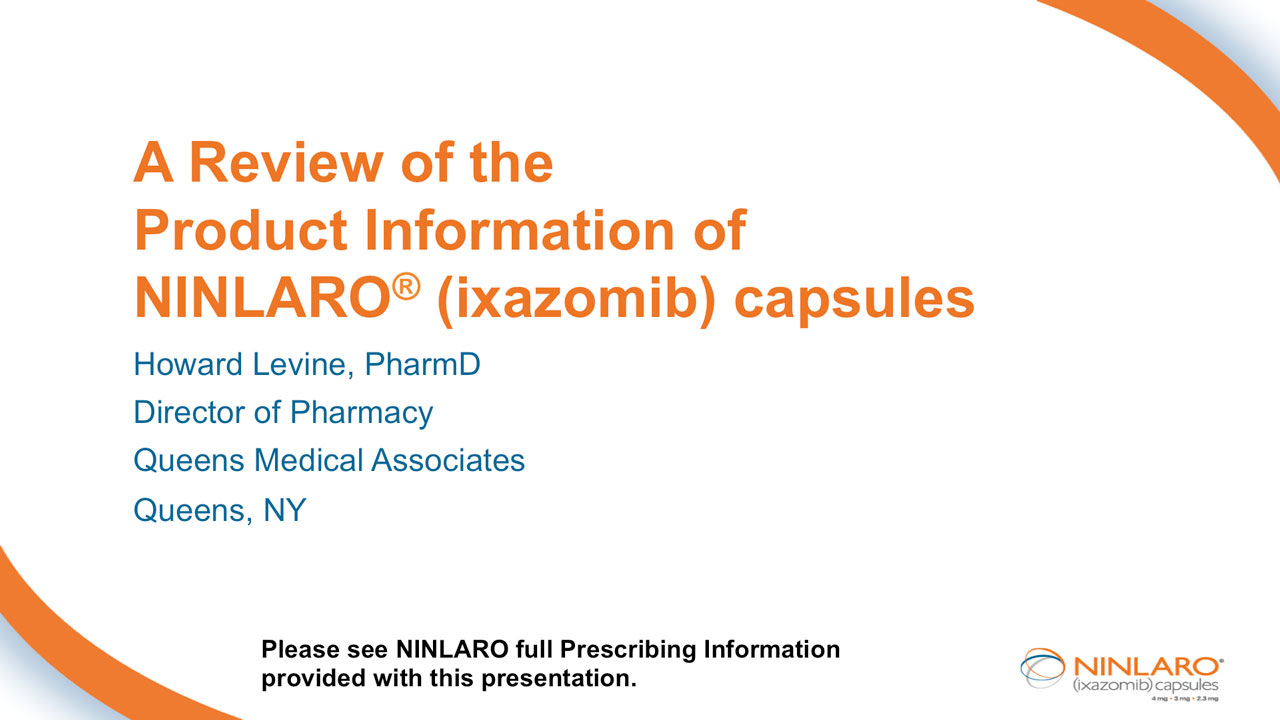Please join us for a review of the product information for NINLARO® (ixazomib)

Tuesday, December 15, 2015, at 12 PM ET
Presented by Ali McBride, PharmD, MS, BCPS, BCOP
Clinical Coordinator Hematology/Oncology
The University of Arizona Cancer Center
Clinical Assistant Professor
College of Pharmacy
The University of Arizona Department of Pharmacy, Tucson, AZ

Wednesday, December 16, 2015, at 12 PM ET
Presented by Robert S. Mancini, PharmD, BCOP
Oncology Pharmacist
PGY2 Oncology Residency Director
St. Luke’s Mountain States Tumor Institute, Boise, ID

Thursday, December 17, 2015, at 3 PM ET
Presented by Howard Levine, PharmD
Director of Pharmacy
Queens Medical Associates
Queens, NY
This peer-delivered program, brought to you by Takeda, will include a clinical overview of NINLARO and its product attributes.
INDICATION AND IMPORTANT SAFETY INFORMATION FOR NINLARO® (ixazomib)
INDICATIONNINLARO® (ixazomib) is indicated in combination with lenalidomide and dexamethasone for the treatment of patients with multiple myeloma who have received at least one prior therapy.
-
WARNINGS AND PRECAUTIONS
- Thrombocytopenia has been reported with NINLARO. During treatment, monitor platelet counts at least monthly, and consider more frequent monitoring during the first three cycles. Adjust dosing as needed. Platelet nadirs occurred between Days 14-21 of each 28-day cycle and recovered to baseline by the start of the next cycle.
- Gastrointestinal Toxicities, including diarrhea, constipation, nausea and vomiting, were reported with NINLARO and may occasionally require the use of antidiarrheal and antiemetic medications, and supportive care. Adjust dosing for severe symptoms.
- Peripheral Neuropathy (predominantly sensory) was reported with NINLARO. Monitor patients for symptoms of peripheral neuropathy and adjust dosing as needed.
- Peripheral Edema was reported with NINLARO. Monitor for fluid retention. Investigate for underlying causes when appropriate and provide supportive care as necessary. Adjust dosing as needed.
- Cutaneous Reactions: Rash, most commonly maculo-papular and macular rash, was reported with NINLARO. Manage rash with supportive care or with dose modification.
- Hepatotoxicity has been reported with NINLARO. Monitor hepatic enzymes regularly during treatment and adjust dosing as needed.
- Embryo-fetal Toxicity: NINLARO can cause fetal harm. Women should be advised of the potential risk to a fetus, to avoid becoming pregnant, and to use contraception during treatment and for an additional 90 days after the final dose of NINLARO.
ADVERSE REACTIONS
The most common adverse reactions occurring in greater than or equal to 20% of patients treated with NINLARO were diarrhea, constipation, thrombocytopenia, peripheral neuropathy, nausea, peripheral edema, vomiting and back pain.
SPECIAL POPULATIONS
- Hepatic Impairment: Reduce the NINLARO starting dose to 3 mg in patients with moderate or severe hepatic impairment.
- Renal Impairment: Reduce the NINLARO starting dose to 3 mg in patients with severe renal impairment or end-stage renal disease requiring dialysis. NINLARO is not dialyzable.
- Lactation: Advise women to discontinue nursing while on NINLARO.
DRUG INTERACTION: Avoid concomitant administration of NINLARO with strong CYP3A inducers.
Please see NINLARO full Prescribing Information.
USO/IXA/15/0127



